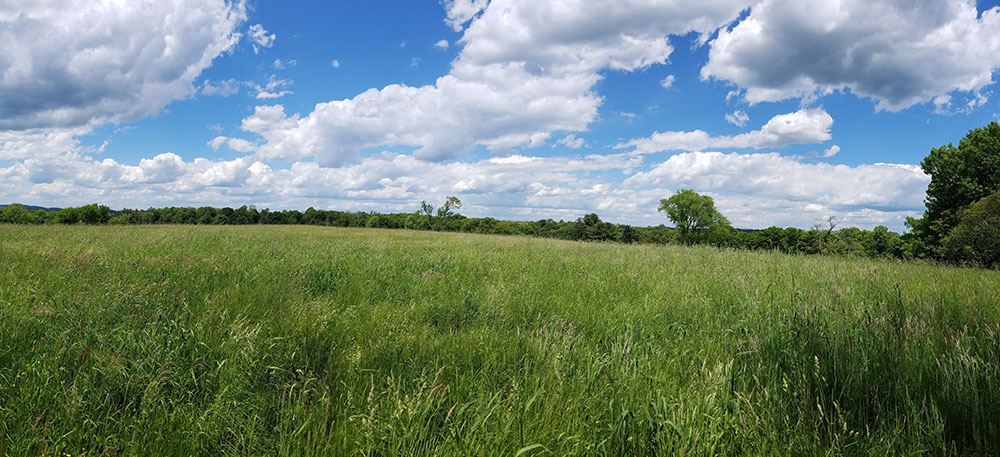Highstead has a long history of natural surveys on the property dating back to when the Dudley’s first purchased land in Redding in the early 1980s, including a soil survey in 1983, a forest vegetation survey in 1984, and a bird and plant survey in 1985. More recently, there have been repeated woodland vegetation surveys, as well as surveys of deer, turtles, rabbits, birds, lichens, and moths and butterflies. One area that has not been thoroughly surveyed, however, is the grassland meadows.

Meadow surveys are complex because grasses and sedges can be difficult to identify, including European species of forage grass that many botanists are not as familiar with. Meadows can have many layers of vegetation, and plants that are closest to the ground are often hidden by taller species. Further, meadows are managed by mowing which complicates surveying and often leaves botanists with the challenge of trying to identify plants from the stubs that remain after they are cut.
In 2024, consulting botanist Chris Mangles conducted our first comprehensive meadow survey over a five-month period, scouting the meadow in spring, summer, and fall to capture the various plants that are present in each season. We expected to discover many new species we didn’t know were growing on the property, but the results were beyond what we expected.
Mangles identified 240 meadow species and acknowledged there are likely many more that he may have missed due to a hay harvest that took place in late August. This relatively high level of species richness—the total number of species in an area—indicates that it is an old meadow.
One of the most exciting discoveries was a large population of Bush’s sedge (Carex bushiiI), a plant of special concern in Connecticut. Another plant of special concern, purple milkweed (Asclepias purpurascens), also lives in the meadow, and is the largest known population in New England.
Mangles also found two new species of orchids. We have now documented four orchid species in the meadow. Many of the recorded species were documented with herbarium specimens, providing a record of the plants found on the property and serving as a reference for future surveys. These surveys are critical for identifying plants of special concern and other threatened species and for protecting open space, such as our meadow, which is also managed for bobolinks (Dolichonyx oryzivorus).